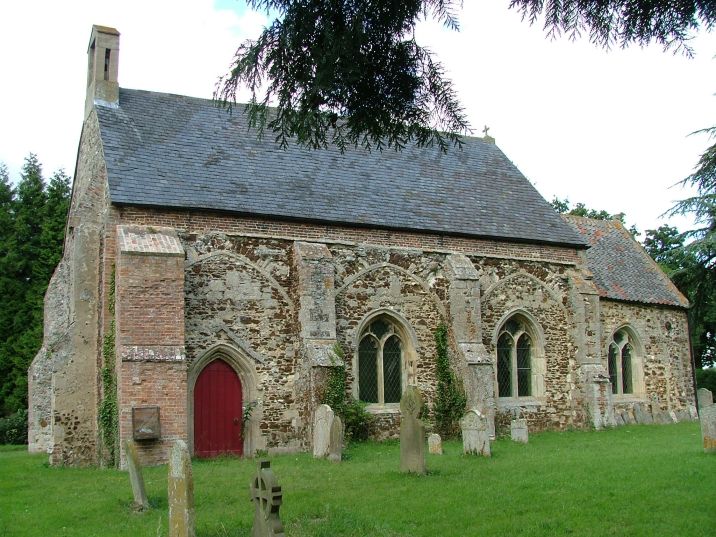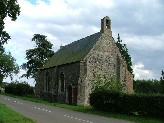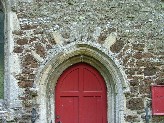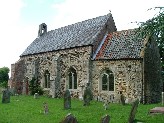| |
|
St Mary,
Fordham Fordham feels curiously remote for a place
so close to the Downham Market to Ely road; its
atmosphere is more like that of the Fens on the other
side of the Ouse than of the rest of Norfolk. Pevsner
says of Fordham that there is no village, just a
scattering of houses; of course, this is true of
many Norfolk parishes, but you know what he means,
Fordham is exactly like that. The church sits across the
road from two fairly grand brick houses, at a bend in the
road.
St Mary is
a mere ghost of a once much bigger church. Looked at from
the outside, the little off-centre chancel is the only
real medieval survival. There was a tower once, but it
has gone. The nave collapsed in the early 18th century,
and was rebuilt using some of the rubble - one window in
the north side appears to be the original tracery, and
you can see the south arcade in the new wall, so there
must have been an aisle once. There is a pleasing mixture
of carstone, flint and red brick.
There are
no signs or notices, no indication that this building is
still in use. It is, unusually for these parts, kept
locked, and there is no indication of a keyholder.
Luckily, the tenacious Peter Stephens managed to track
down the custodian, who let Peter inside and treated him
to a guided tour which, Peter tells me, went on at some
length. Some of Peter's atmospheric photos of the inside
are below.
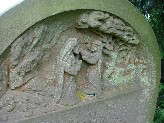 |
|
In
the graveyard is one of the deepest and most
elaborate reliefs on a Victorian gravestone that
I have yet seen in Norfolk. It shows the woman at
the well giving water to the thirsty Christ.
Trees shelter the pair, and even the rope for the
bucket is rendered perfectly. The figures are
sentimental rather than naturalistic, but you
sense the heat of a dusty day in Palestine 2000
years ago. The stone appears reddish -
could it be granite? - and all in all it is
remarkably fine. I wonder who the mason was?
|
Simon Knott, September 2005
|
|

